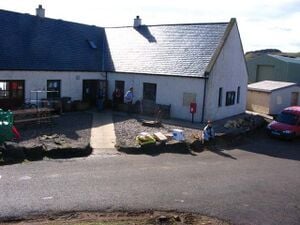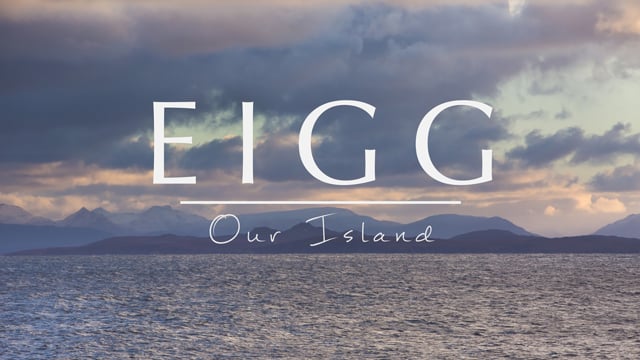The aim of this page is to recognise, celebrate and encourage the self-empowerment of community agency networks (CANs) and community groups across Eigg.

Community energy[edit | edit source]
The Heritage Trust provisioned a mains electricity grid, powered from near 100% renewable energy sources. Previously, the island was not served by mains electricity and individual crofthouses had wind, hydro or diesel generators and the aim of the project is to develop an electricity supply that is environmentally and economically sustainable.
The new system incorporates a 9.9 kWp PV system, three hydro generation systems (totalling 112 kW) and a 24 kW wind farm supported by stand-by diesel generation, ultra-capacitors, flywheels and batteries to guarantee continuous availability of power. A load management system has been installed to provide optimal use of the renewables. This combination of solar, wind and hydro power should provide a network that is self-sufficient and powered 98 percent from renewable sources. On 1 February 2008 the system was switched on.
Eigg Electric generates a finite amount of energy and so Eigg residents agreed from the outset to cap electricity use at 5 kW at any one time for households, and 10 kW for businesses. If renewable resources are low, for example when there is less rain or wind, a "traffic light" system asks residents to keep their usage to a minimum. The traffic light reduces demand by up to 20 percent and ensures that there's always enough energy for everyone.
The Heritage Trust has formed a company, Eigg Electric Ltd, to operate the new £1.6 million network, which has been part funded by the National Lottery and the Highlands and Islands Community Energy Company.
Other sustainability projects[edit | edit source]
In September 2008, Eigg began a year-long series of projects as part of their success as one of ten finalists in NESTA's Big Green Challenge. While the challenge finished in September 2009, the work to make the island "green" is continuing with solar water panels, alternative fuels, mass domestic insulation, transport and local food all being tackled. In May 2009, the island hosted the "Giant's Footstep Family Festival", which included talks, workshops, music, theatre and advice about what individuals and communities can do to tackle climate change.
In January 2010, Eigg was announced as one of three joint winners in NESTA's Big Green Challenge, winning a prize of £300,000. Eigg also won the prestigious Ashden UK Gold Award in July 2010.
Video[edit | edit source]
About Eigg[edit | edit source]
Eigg ( eg; Scottish Gaelic: Eige) is one of the Small Isles in the Scottish Inner Hebrides. It lies to the south of the island of Skye and to the north of the Ardnamurchan peninsula. Eigg is 9 kilometres (5.6 miles) long from north to south, and 5 km (3 mi) east to west. With an area of just over 3,000 ha (11.6 sq mi) it is the second-largest of the Small Isles after Rùm. The highest eminence on Eigg is The Sgùrr, which is formed from the Sgurr of Eigg Pitchstone Formation, which erupted into a valley of older lavas during the Eocene epoch.
There are numerous archaological sites dating from the prehistoric period of human occupation with the earliest written references relating to the Irish monk Donnán who arrived on Eigg around 600 AD. Commencing in the early 9th century Norse settlers established the Kingdom of the Isles throughout the Hebrides. The 1266 Treaty of Perth transferred the territories of the Kingdom of the Isles to King Alexander III of Scotland. From the late 14th century the island became a possession of Clanranald during which time a notorious massacre took place during a period of clan warfare. After more than four centuries in Clanranald's hands the island was sold during the 19th century and the new laird evicted many of his tenants en masse and replaced them with herds of sheep.
There were then a series of owners until the island was purchased by the Isle of Eigg Heritage Trust in 1997. The trust is a form of community ownership and another stakeholder, the Scottish Wildlife Trust, manages the island as a nature reserve. Eigg now generates virtually all of its electricity using renewable energy. In April 2019, National Geographic discussed the island in an online article, estimating the average number of annual visitors at 10,000.
External links
- Isle of Eigg on twitter.com, added 11:11, 5 February 2024 (UTC)


